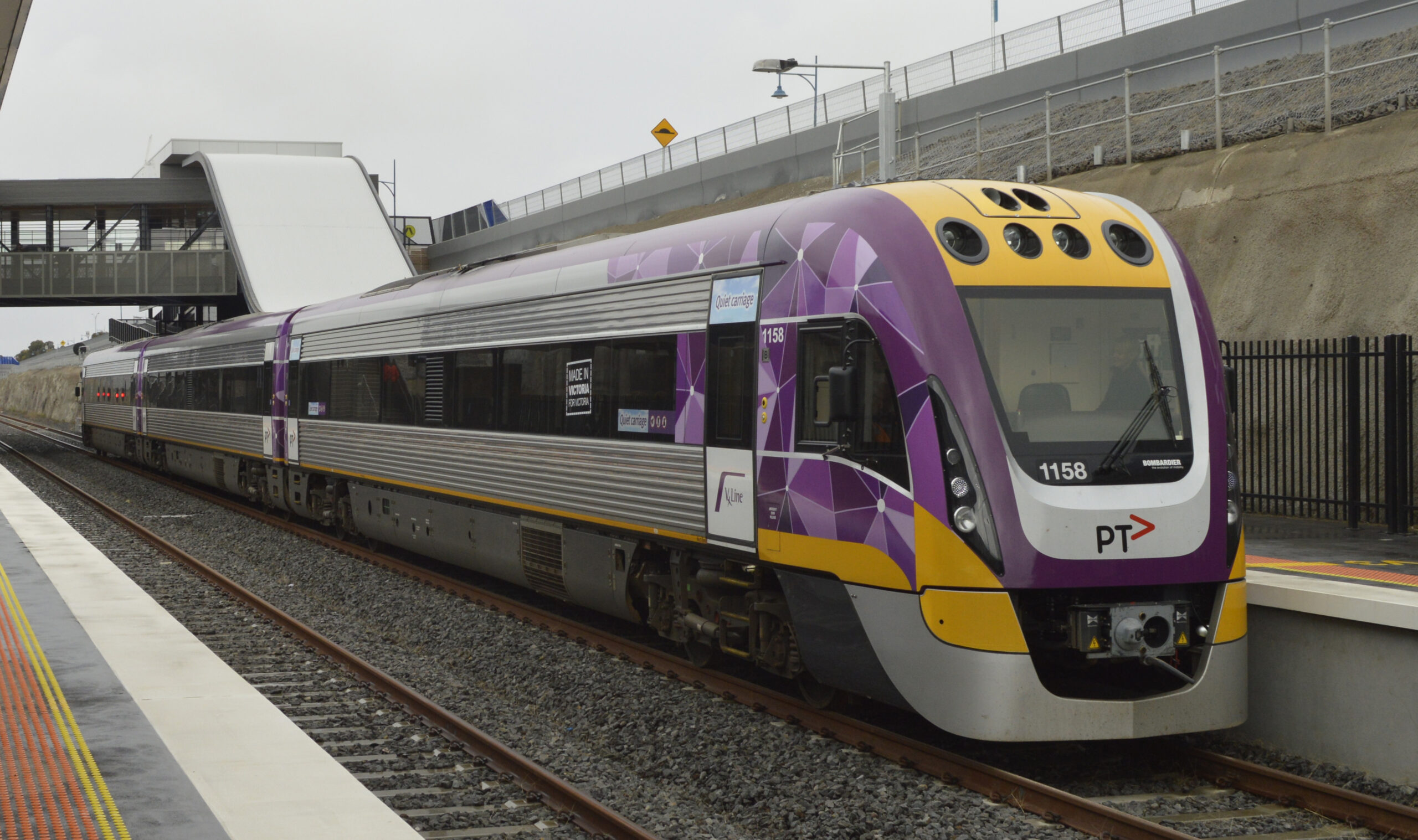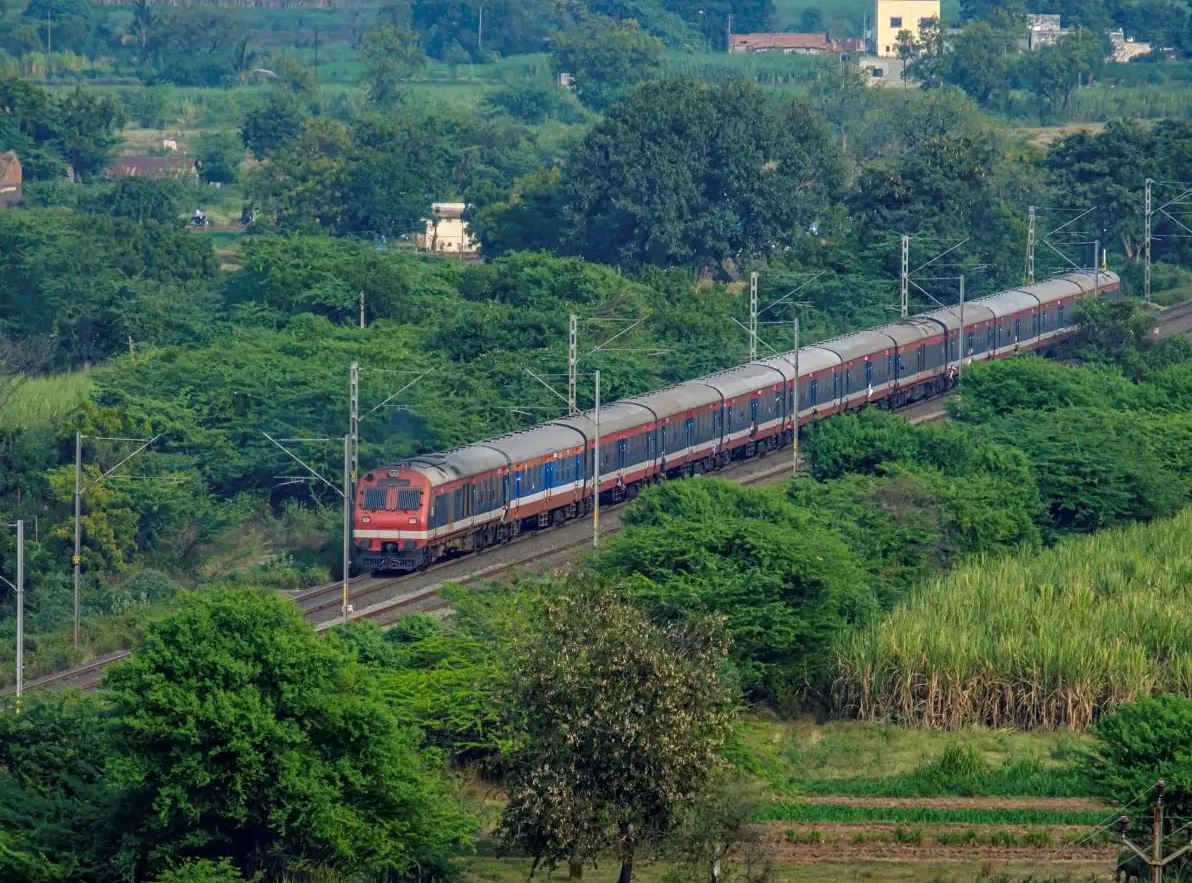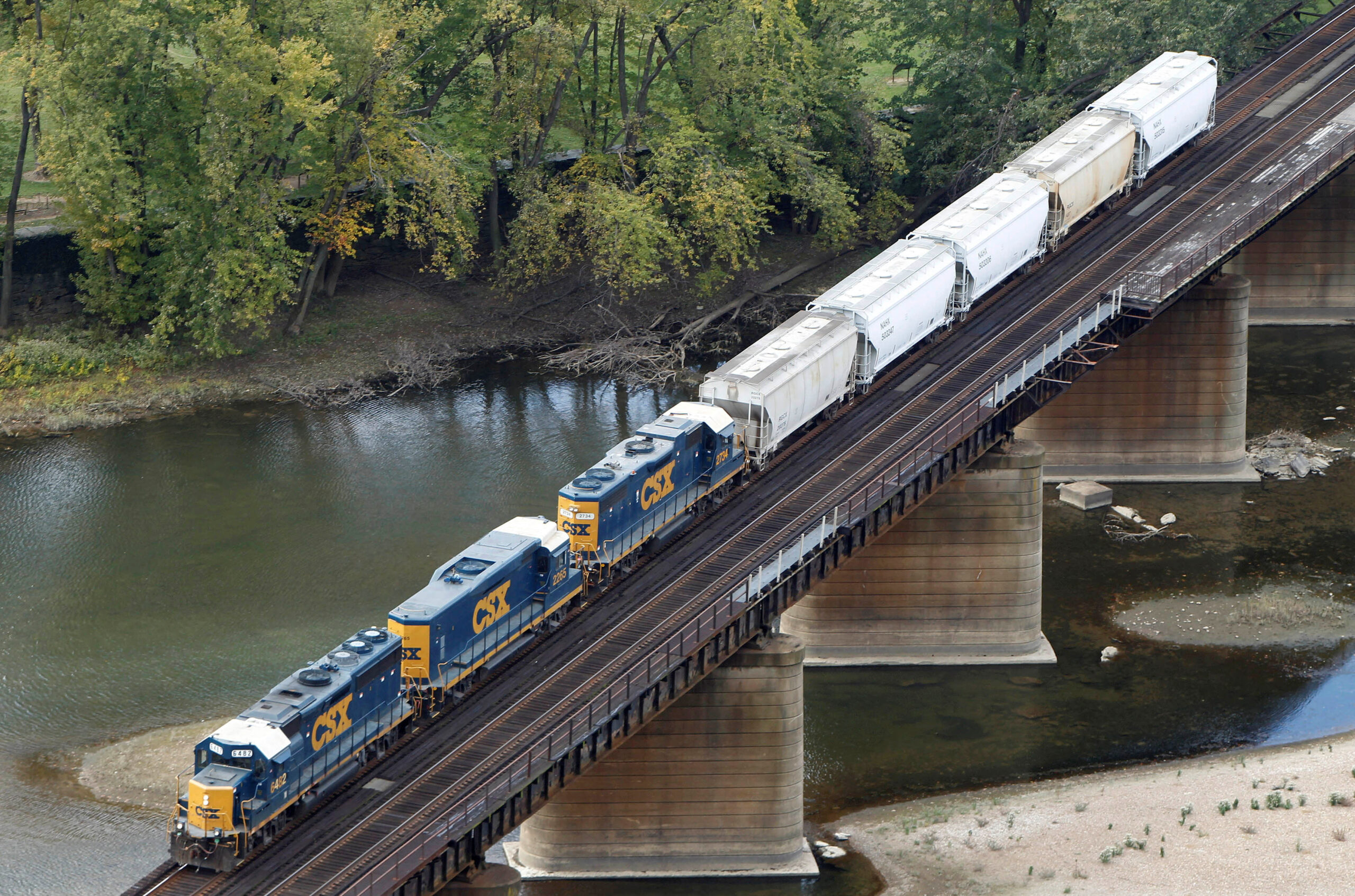Train travel is incredibly practical for both freight and passenger transportation. First of all, compared to cars on wheels, ships, and airplanes, the railway network is the most affordable and environmentally beneficial means of transportation. The countries with the largest rail networks are either the most developed or the least developed. The railway has helped numerous countries grow. We’ll look at the top ten largest railway networks in the world and learn more about them.
10. Brazil

Total Length: 28,000km approx.
Brazil is ranked tenth on the list of the top ten largest railway networks in the world. Brazil’s railway system, while not as big as its road system, still covers a sizable chunk of the nation. The Brazilian railway system is run by numerous organizations, both governmental and private, and it is crucial for moving people and goods around the nation. The Brazilian railway system is broken down into four main types: wide gauge, meter gauge, narrow gauge, and monorail. Its total length is roughly 28,000 kilometers. The vast majority of the network uses the 1,000 mm (3 ft 3 3/8 in) rail gauge known as the “meter gauge.” However, the network also includes sizable amounts of both wide gauges (1,600 mm or 5 ft 3 in) and small gauge sections (762 mm or 2 ft 6 in).
In Brazil, bulk goods like soybeans, iron ore, and sugar are generally transported by rail, however, certain areas also use it for passenger transit. The North-South Railway, which connects the states of Amapá, Pará, Maranho, Tocantins, Goiás, and Sao Paulo, is one of the most significant railway arteries in Brazil and is used to transport soybeans, corn, and other agricultural products. Despite the significance of Brazil’s railway network, it has encountered difficulties due to a lack of maintenance and investment, which has resulted in considerable operating inefficiencies and safety concerns in some places. Yet, there have been initiatives to update and broaden the network, including the building of additional rail lines and the adoption of cutting-edge tools like automated train control systems.
9. France

Total Length: 30,000km approx.
France has one of the greatest rail networks in the world, with more than 30,000 km of track and more than 3,000 stations. The network is managed by SNCF, the national railway operator of France, which provides both passenger and freight services. The French rail network offers a variety of services, including suburban trains, high-speed trains (TGV), intercity trains (Intercités), and regional trains (TER) (Transilien). One of France’s most recognizable trains, the TGV connects several of the nation’s major cities and has a top speed of up to 320 km/h. The French railway network offers connections to neighboring nations like Belgium, Germany, Italy, Spain, Switzerland, and the United Kingdom in addition to domestic services.
Whereas Thalys trains connect Paris with Brussels, Amsterdam, and Cologne, Eurostar trains connect Paris with London. The significant use of electrification, with electricity powering more than 90% of the network, is one prominent aspect of the French railway system. The network also features a number of well-known stations, including the Gare du Nord, one of Europe’s busiest stations, and the Gare de Lyon in Paris. With plans to upgrade and enlarge the network during the ensuing years, the French government has committed to making investments in the rail system. To reduce travel times and enhance passenger comfort, this involves the development of new high-speed lines and the renovation of current infrastructure.
8. Argentina

Total Length: 36,000km approx.
Argentina has a huge railway system that encircles most of the nation. The first railway in Argentina was constructed in 1857, and over the next few decades, the network rapidly grew with important lines connecting Buenos Aires with both the interior of the nation and its neighbors. Unfortunately, the railway network suffered from neglect and underinvestment in the second half of the 20th century, and many lines were closed or allowed to deteriorate. There have been initiatives to revitalize the network in recent years, and some lines have been restored and renovated. Trenes Argentinos, the country’s major passenger rail company, runs both long-distance and local services.
Argentina currently has the eighth-largest rail network among the top ten largest railway networks in the world, measuring more than 36,000 kilometers. At the end of World War II, Argentina had a rail network that was around 47,000 km long and was primarily run by French and British-owned railroads. Yet in the decades that followed, the network was reduced to the 36,000 km of lines that remain today due to drop-in profitability and an increase in highway building. With the founding of the state railway firm Ferrocarriles Argentinos, the network’s operating railway companies were nationalized in 1948.
7. Australia

Total Length: 40,000km approx.
With more than 40,000 km, the Australian railway network ranks seventh in the world in terms of length. The Australian government, either at the federal or state level, owns and maintains the majority of the railway network infrastructure. Nonetheless, private businesses run the majority of the trains on the network. Australia has a vast railway system that covers the entire country. Australia’s railway network is run by a variety of organizations, including both state-owned and for-profit businesses. Australia’s passenger rail network is rather small, with the majority of its services concentrated in its major cities.
Standard gauge (1435 mm), narrow gauge (1067 mm), broad gauge (1600 mm), and dual gauge (1435/1067 mm) are the various gauges used in the Australian rail network. Interconnectivity between various parts of the network may become difficult as a result. Among the main freight operators on the network include Aurizon (previously QR National), Genesee and Wyoming Australia, and Pacific National. The top long-distance passenger rail operators are Queensland Rail, Great Southern Railway, and NSW TrainLink. In important suburban areas, commuter passenger services are run by Metro Trains Melbourne, Sydney Trains, V/Line, and Adelaide Metro. In addition, the nation is home to several private mining railroads.
6. Germany

Total Length: 40,682km approx.
With a total track length of about 40,682 km, Germany has a sizable rail infrastructure that is sixth among the top ten largest railway networks in the world. One of the biggest railway companies in Europe, the state-owned Deutsche Bahn, operates the network. The German railway network plays a significant role in the nation’s transportation infrastructure, carrying both people and cargo. Berlin, Munich, Frankfurt, and Hamburg are just some of the major cities and regions connected by the network, which also offers international links to nearby nations. High-speed trains, regional trains, and suburban trains in metropolitan areas are all part of the German rail network. Several high-speed rail routes are run by Deutsche Bahn, such as the ICE (Intercity-Express) network, which connects important cities at speeds of up to 186 mph (300 km/h).
The German railway system delivers a variety of items, including cars, chemicals, and other products, in addition to carrying passengers. The railway plays a significant role in the nation’s manufacturing and commercial sectors by facilitating the transportation of commodities across the nation and to foreign markets. In recent years, the German government has made investments in the modernization and growth of the railway network, with an emphasis on enhancing sustainability, efficiency, and safety. This includes the introduction of new trains, including the Coradia iLint train, which runs on numerous regional routes and is powered by hydrogen. In general, the German railway system is an essential component of the nation’s transportation network, facilitating the movement of people and products throughout the nation and promoting economic progress.
5. Canada

Total Length: 49,422km approx.
With a total track length of about 49,422 kilometers, Canada boasts a sizable rail network. Many private businesses, notably Canadian National Railway and Canadian Pacific Railway as well as smaller regional and municipal operators, manage the network. With corporations like Canadian National Railway and Canadian Pacific Railway operating significant networks that transport things like grain, oil, and other commodities, the Canadian railway system is essential to the movement of goods throughout the nation. Remote and northern settlements, which frequently depend on train transportation for supplies and goods, have access to the railway as well.
The national passenger rail operator VIA Rail operates passenger trains on Canada’s railway network in addition to freight trains. Many long-distance train routes are run across the nation by VIA Rail, notably the Canadian, which connects Toronto with Vancouver, and the Ocean, which connects Montreal with Halifax. The Canadian railway system, as a whole, plays a significant role in the nation’s transportation infrastructure, making it easier to carry people and commodities across the nation and fostering economic progress. In recent years, the government has made investments in the modernization and growth of the railway network, with a focus on enhancing efficiency and safety.
4. India

Total Length: 70,225km approx.
A total of more than 70,225 km of track make up one of the greatest railway networks among the top ten largest railway networks in the world, which is found in India. The network is run by the government-owned Indian Railways, which is the second-largest railroad in the world behind China’s railway business. The Indian railway system, which transports both people and freight, is an essential component of the nation’s transportation infrastructure. The network links remote and rural locations as well as India’s major cities and regions, including Delhi, Mumbai, Kolkata, and Chennai. Long-distance express trains, regional trains, and suburban trains in metropolitan areas are all part of the network.
The Palace on Wheels, a luxurious tourist train that passes through Rajasthan, one of the most popular travel destinations in India, is also run by Indian Railways. In recent years, the Indian government has made significant investments in the country’s railway network with the goal of enhancing system efficiency, safety, and modernization. This includes the introduction of high-speed trains, such as the Vande Bharat Express, one of the fastest trains in India that runs between Delhi and Varanasi. Overall, the Indian railway system is an essential component of the nation’s economy and transportation infrastructure, making it easier to carry people and commodities around the nation and fostering economic growth and development.
3. Russia

Total Length: 86,000km approx.
A total of more than 86,000 km of track make up one of the greatest railway networks in the world, which is found in Russia. One of the biggest railway businesses in the world, Russian Railways, a state-owned corporation, manages the network. Russia, the largest country in the world by land area, depends heavily on its railway network for the transportation of both commodities and people. Moscow, St. Petersburg, and Siberia are just a few of the major cities and regions connected by the network, which also gives access to outlying and rural areas. The Trans-Siberian Railway, one of the world’s longest railroads that stretches over 9,200 km from Moscow to the Far East, is also a part of the Russian rail network.
The railway is a well-liked tourist destination as well as an essential economic line linking Russia to China and other Asian nations. The Russian railway system also comprises commuter trains, suburban trains, and light rail systems in metropolitan areas in addition to passenger and freight trains. With an emphasis on enhancing the system’s effectiveness and safety, the government has recently made investments in the extension and renovation of the railway network. Overall, the Russian railway system is essential to the nation’s economy and transportation system, serving as a major link between various regions and facilitating the flow of both people and commodities throughout the nation.
2. China

Total Length: 150,000km approx.
China has the second-largest railway network among the top ten largest railway networks in the world. The most recent surveys indicate that there are more than 150,000 kilometers of railway tracks in existence. In addition, the High-Speed Rail track is the longest in the world at 40,000 km. China’s transportation infrastructure includes a significant portion that serves both freight and passengers: the railway system. Given that China has built the largest high-speed rail system in the world, with more than 35,000 km of track, high-speed trains play a significant role in the country’s railway system.
China’s railway network also comprises conventional passenger trains that offer service to both urban and rural areas, as well as freight trains that transport a variety of goods, including coal, oil, and other raw materials. These trains are in addition to the country’s high-speed trains. With an emphasis on growing the high-speed rail network and enhancing the system’s efficiency and safety, the Chinese government has made large investments in the rail network recently. Due to this investment, rail travel is now a common and convenient means of transportation for both people and commodities, aiding in China’s economic development and prosperity.
1. United States

Total Length: 250,000km approx.
The vast railway system in the US spans more than 250,000 kilometers of track. Many commercial and public organizations, including freight and passenger railroads, Amtrak, and commuter train agencies, run the network. The majority of the American railway network is made up of freight railroads, with major networks being run by businesses like Union Pacific, BNSF Railway, and CSX Transportation. These businesses move a wide variety of products, including intermodal containers, finished commodities, and raw materials. Amtrak operates the country’s main passenger rail system, with service to more than 500 locations in 46 states.
The firm runs a variety of long-distance and local trains, with well-known itineraries such as the California Zephyr between Chicago and San Francisco and the Northeast Corridor, which connects Boston, New York, and Washington, D.C. In addition to Amtrak, commuter rail services are available in numerous US cities and regions, providing commuters moving into and out of urban areas with transportation. Often, public organizations like transit systems or regional transportation authorities are in charge of running these services. In general, the US railway system is crucial for moving people and goods across the nation and is still a significant component of the nation’s infrastructure.
The overall track length, the number of passengers carried, the volume of freight transported, and the level of infrastructure and technology investment are frequently used to rank the top ten largest railway networks in the world. Generally, depending on the criterion employed, the top ten railway networks in the world can be ranked differently, and each nation’s network has its own distinct advantages and disadvantages. Railway systems, on the other hand, are a crucial part of the transportation infrastructure because they offer a practical, economical, and sustainable way to transport people and commodities over long distances.














